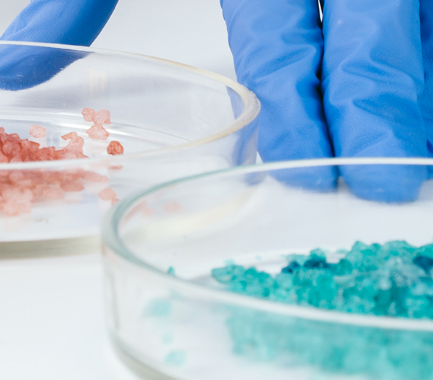Your contact
PENPET-Team - Hamburg

Christoph Meister
Sales
Tel. +49 (0) 40 - 675 7 99 30
sales@penpet.de
Get in touch with us.
Dibutyl maleate (DBM)
Dibutyl maleate is an organic compound that belongs to the carboxylic acid esters and is mainly used as a plasticizer for dispersions of vinyl acetate with other copolymers. In addition, the substance serves as a starting point for the synthesis of other organic compounds. To produce it, the substances 1-butanol and maleic anhydride are reacted in the presence of p-toluenesulfonic acid.
At PENPET you get dibutyl maleate of the highest quality, from a reliable partner who will also meet your requirements in the long term. We look forward to receiving your inquiry for an individual offer. Prompt delivery of the liquid compound can be made in packages with different weights.
CAS no. 105-76-0
EINECS no. 203-328-4
Molecular formula: C12H20O4
Synonyms: Dibutyl maleate, dibutyl maleate, maleic acid dibutyl ester, (Z)-2-butenedioic acid dibutyl ester
Areas of application: Plasticizer for aqueous dispersions, starting material for chemical synthesis processes
More information
As a double ester of maleic acid, dibutyl maleate consists of three components which are linked by two ester groups. At the center of its molecule is the remainder of the maleic acid, with a double bond between the two central carbon atoms. This gives dibutyl maleate an unsaturated character, as a result of which the substance can enter into addition reactions with the absorption of hydrogen. The maleic acid residue is followed on both sides by ester groups which are each connected to a linear butyl group.
Dibutyl maleate is an oily, non-volatile liquid. The colorless to slightly yellow compound has a characteristic odor of its own. The liquid substance changes to the gaseous state when heated to 280 °C and solidifies to a solid at temperatures below its melting point of -85 °C. This makes dibutyl maleate suitable for use in a wide temperature range. The compound is very slightly soluble in water.
Under the recommended storage conditions, dibutyl maleate remains chemically stable over the long term. However, contact of the compound with acids, bases and strong oxidizing agents can lead to violent reactions with a strong release of heat.
Dibutyl maleate is a flammable substance, but it is difficult to ignite. Irritant gases hazardous to health are released when the compound burns. Among other things, significant amounts of carbon dioxide and carbon monoxide can be produced.
Dibutyl maleate is an irritant hazardous substance that can cause acute and chronic health problems. Contact with the compound can cause redness and burning irritation on the skin. Severe or repeated exposure can cause allergic skin reactions. Soaked parts of the body should be cleaned thoroughly with running water and soap. If the symptoms persist, the affected skin areas should be examined by a doctor.
The vapors and aerosols of the substance irritate the respiratory tract and can cause coughing and burning pain in the mucous membranes. Inhaling large amounts can cause serious damage to the lungs. If dibutyl maleate is swallowed, irritation of the mucous membranes of the mouth, esophagus and stomach as well as gastrointestinal symptoms such as abdominal pain, nausea, vomiting and diarrhea are to be expected. Depending on the amount ingested, burns to the digestive tract may occur.
Dibutyl maleate can cause serious damage to aquatic organisms and has been assessed as a clearly water-polluting substance. Prevent the compound from entering water bodies, the ground or wastewater. The local authorities must be informed of any escape of larger quantities of the substance into the environment. Special regulations apply to the transport of dibutyl maleate.
